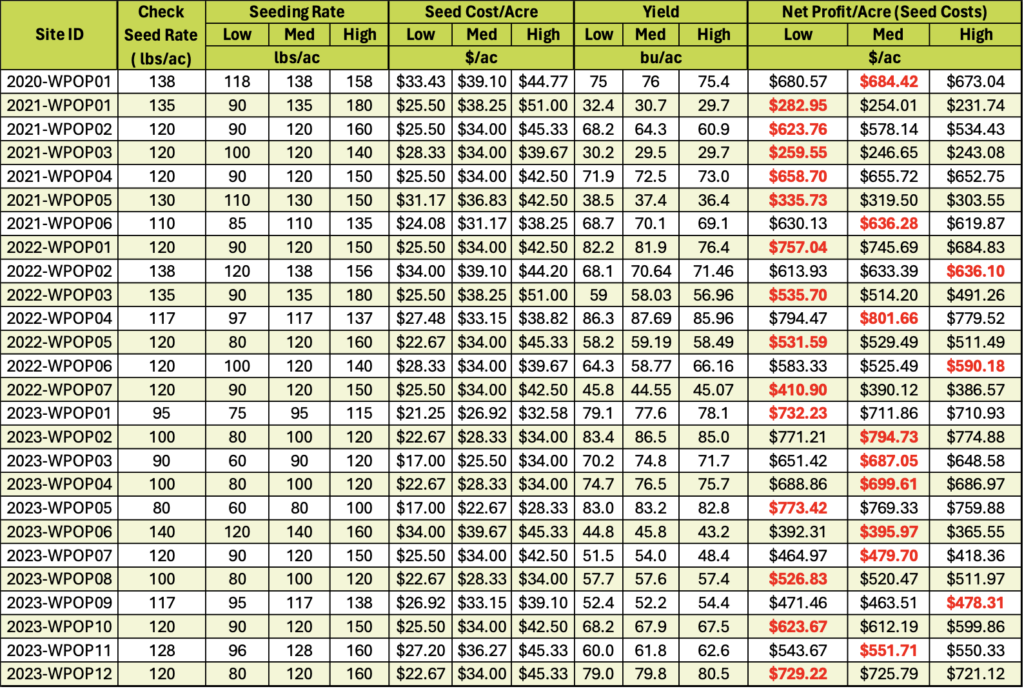Research on the Farm – Wheat Seeding Rate Trial Summary

The Manitoba Crop Alliance (MCA) Research on the Farm (ROTF) program conducts scientific research with farmer members, using replicated strip trials on commercial fields. Farmer co-operators use their own equipment and management practices to conduct this research. Research projects are developed to investigate current and pressing agronomic questions and provide site-specific answers. More information about the ROTF program and all trial results can be found here.
As wheat genetics have improved, testing current seeding rate practices for new spring wheat varieties was necessary to understand if targeted plant stands are being optimized for yield and grain quality. The purpose of the spring wheat seeding rate trial was to quantify the agronomic and economic impacts of reducing and increasing farmers’ target plant stands compared to their normal target plant stand. This was done by increasing and decreasing seeding rates. Seeding rates ranged from 20 – 45 lbs/ac higher and lower than the farmers’ normal seeding rate (Table 1). This trial has been conducted for four growing seasons (2020 – 2023) and has 26 site-years of data. Trial sites covered numerous soil types, management practices and climatic conditions, as sites were located across agro-Manitoba.

Figure 1. Summary of spring wheat yield by seeding rate for all trial sites from 2020 – 2023. Note: Letters indicate significant differences between treatments.
Over the past four growing seasons, significant differences in plant-stand density were observed at 50 per cent of trial sites. In all cases, where a significant difference in plant-stand density was observed, the highest seeding rate had the highest plant-stand density. Although significant differences in plant-stand density were observed between treatments at 50 per cent of sites, there were only three sites where significant yield differences were observed. In each instance where a significant yield difference was observed, the low seeding rate treatment always out yielded the high seeding rate treatment (Figure 1).
Results from this trial indicate that producers have a good idea of the optimal seeding rate for their farm. Our results also suggest that during dry conditions, increasing your seeding rate does not necessarily lead to increased yield. Although, it should be noted that this data does not directly measure other variables that are impacted by seeding rates, such as crop uniformity and days to maturity. No statistical analyses were conducted on grain quality parameters.
Table 1. Economic analysis of all trial sites from 2020-2023.

Note: Seed costs are based on Manitoba Agriculture 2023 Cost of Production Guidelines ($34/ac or $17/bu). Wheat prices based on a No. 1 grade, hard red spring wheat price of $9.52/bu. Net profit calculated based on seeding costs only.
In terms of profitability, in this ROTF trial, it typically did not pencil out economically to use the high seeding rate, as there were no significant yield increases when the high seeding rate was used.
Tone Ag Consulting carries out MCA’s ROTF trials in all six of our crop-types. They assist the farmer with plot planting and harvesting, then capture key information throughout the growing season. This includes soil sampling in the spring, followed by growth stage notes and precipitation data during the growing season.
